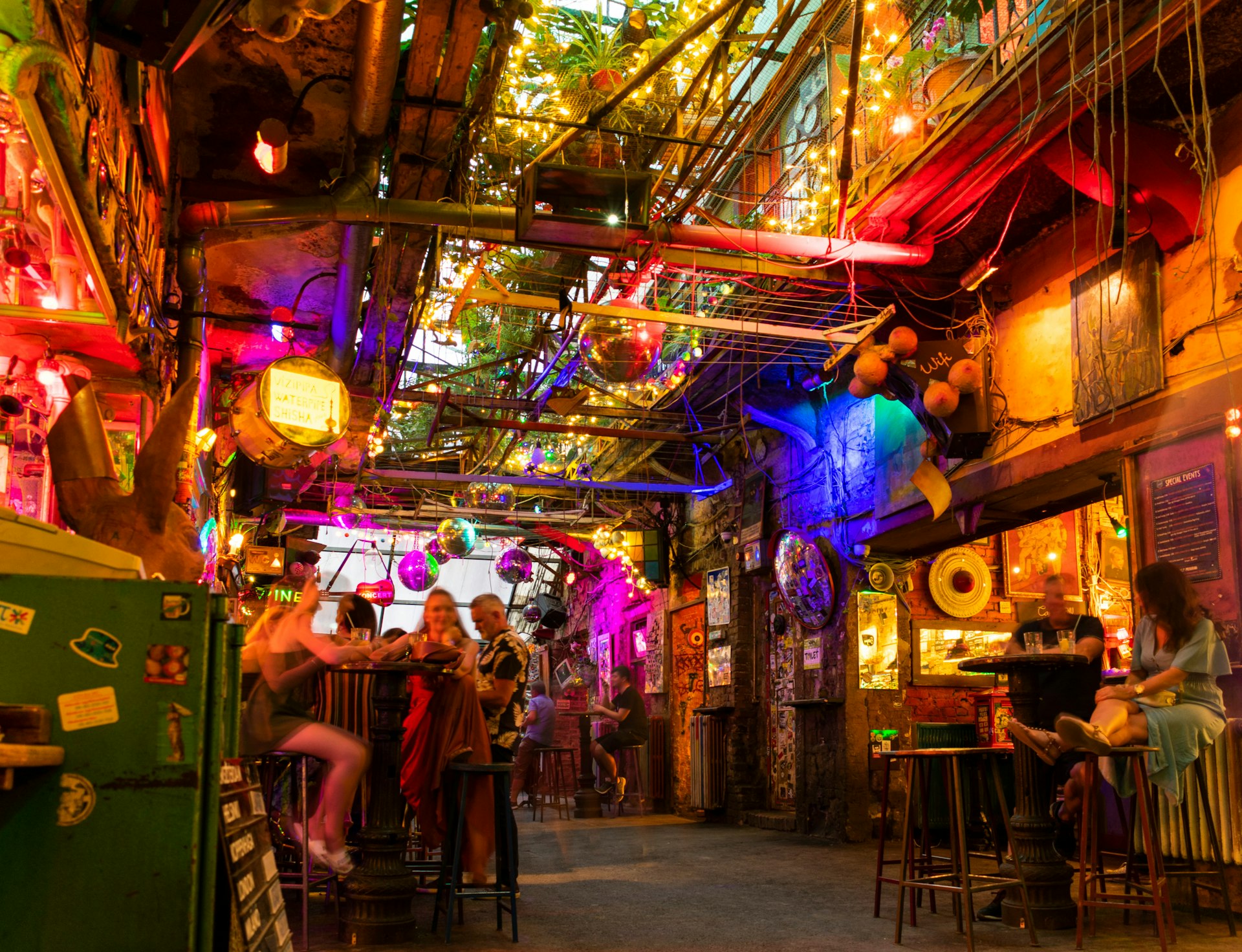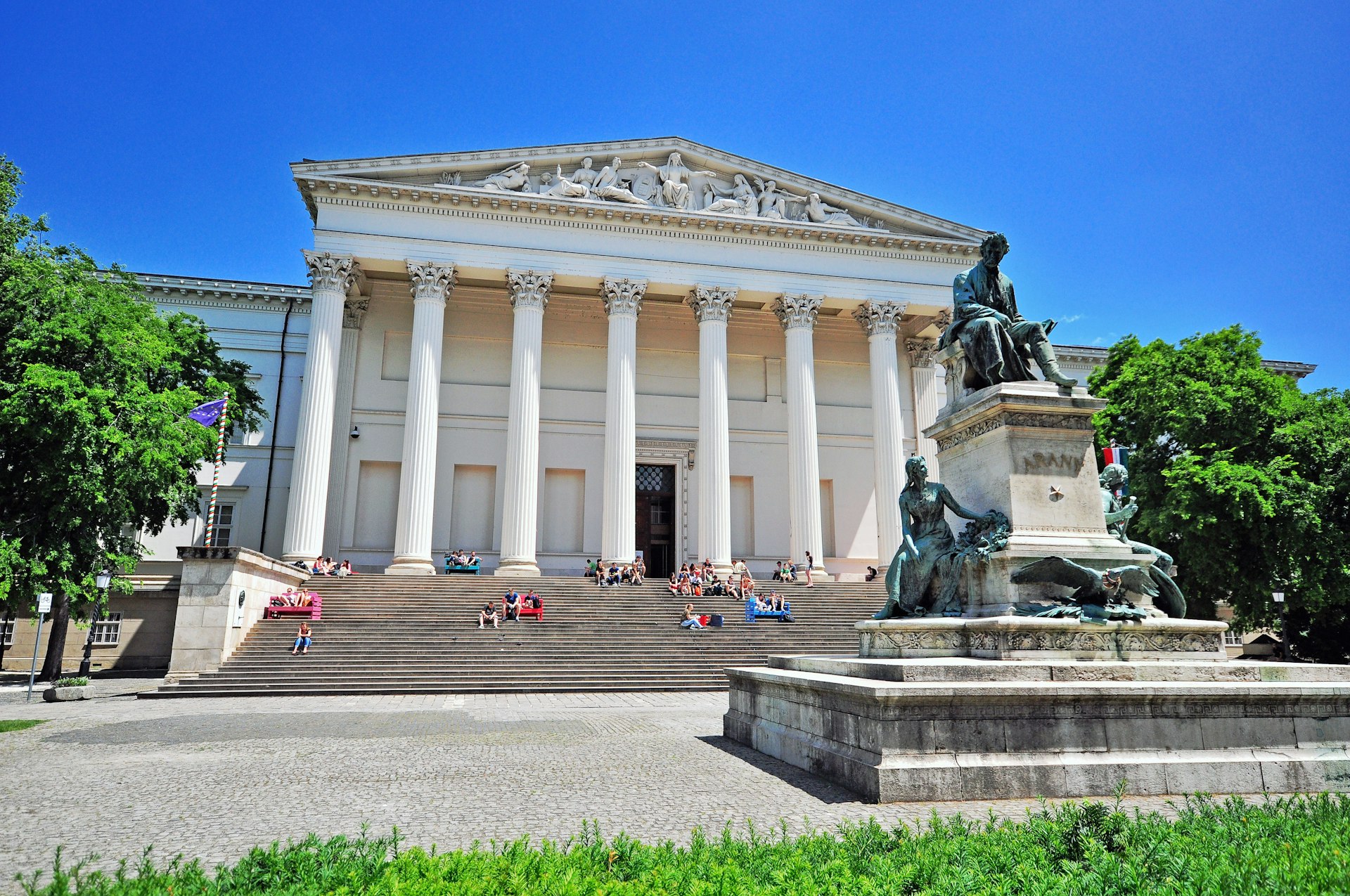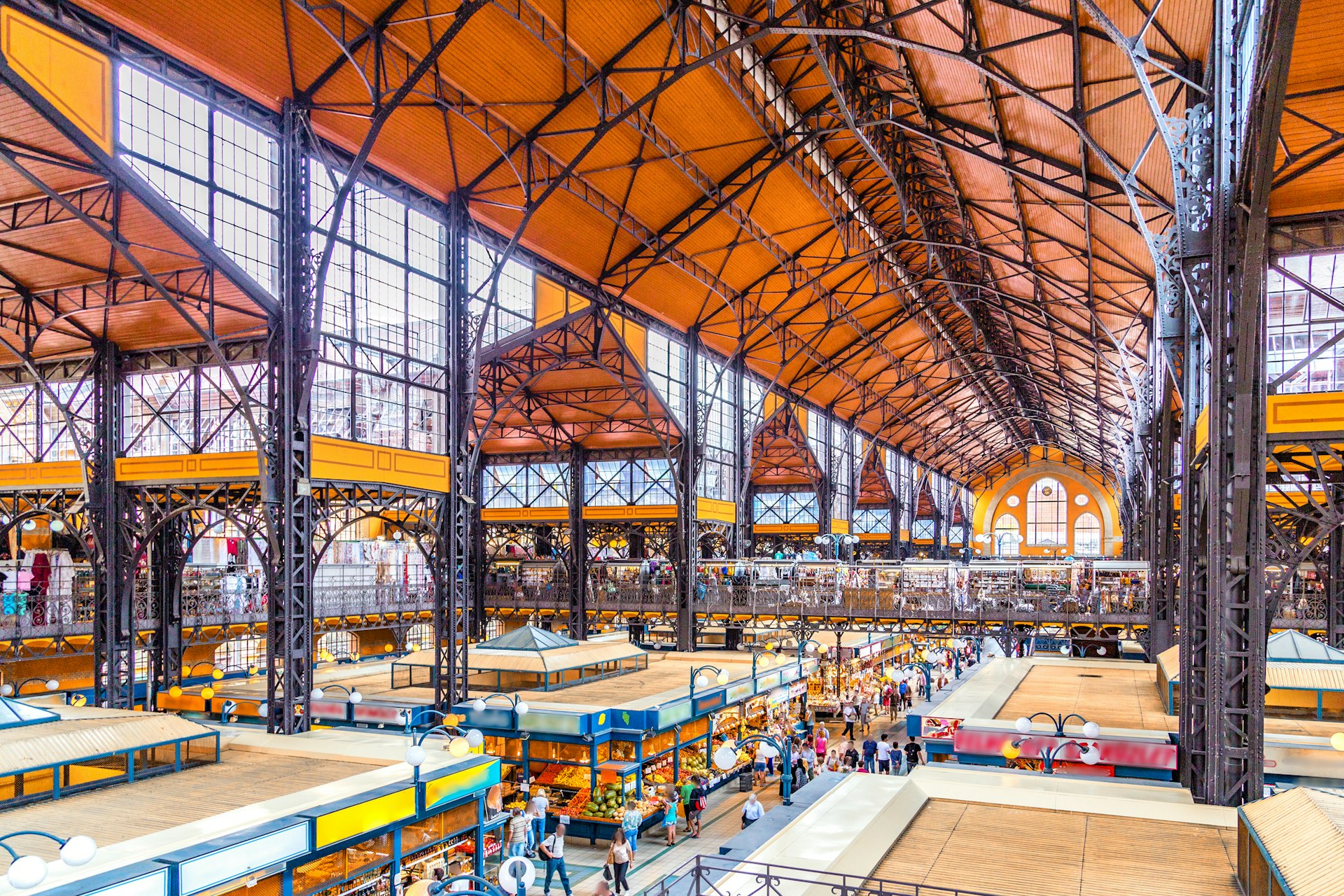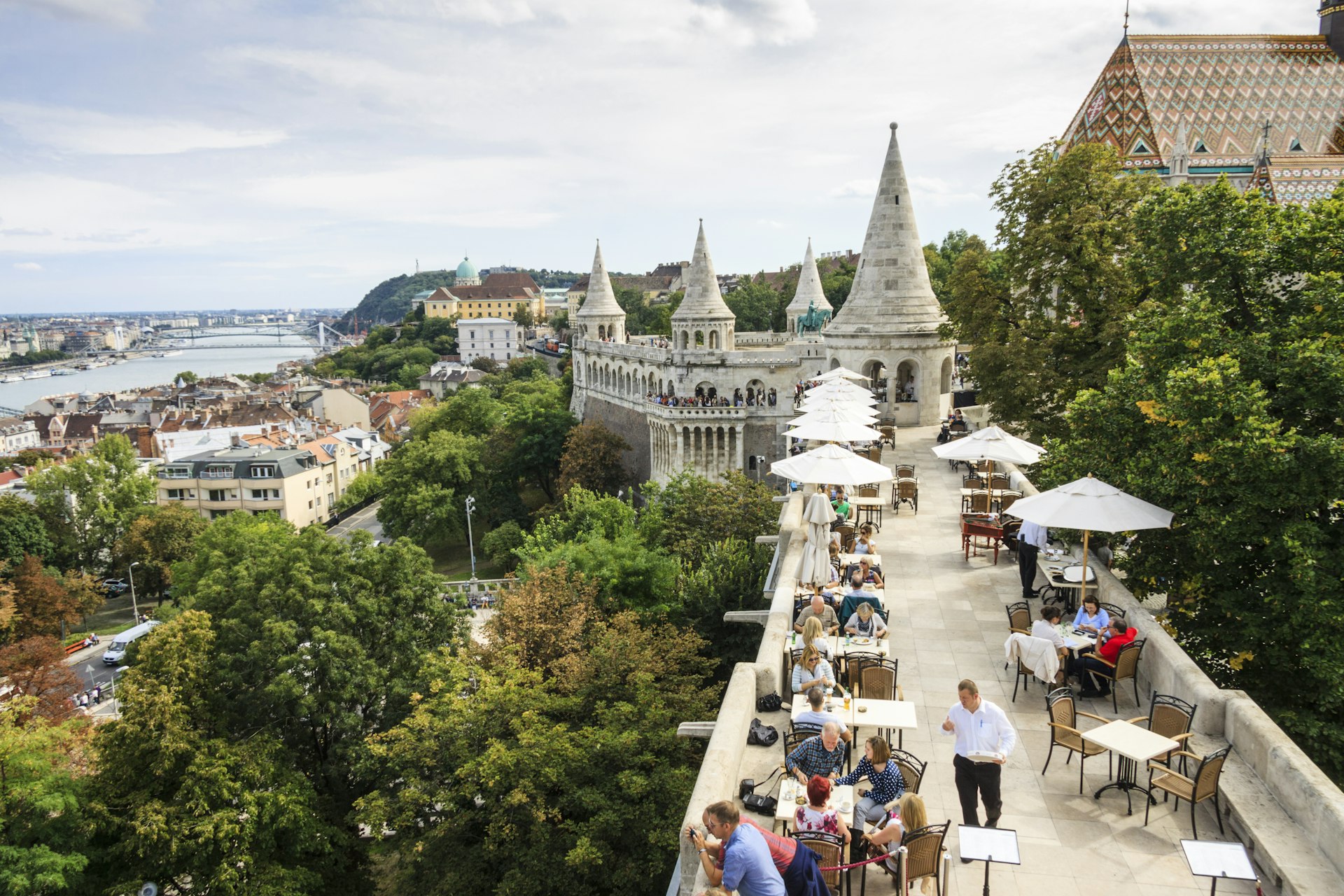From the stately monuments of Castle Hill to a revitalized industrial quarter on the banks of the Danube, each of Budapest’s neighborhoods has a distinct personality that gradually changes as you cross from one kerület (district) into another.
Similar to the arrondissements in Paris, each district fans out in a clockwise direction, beginning at Buda (districts I and II), onto Óbuda Island (III), and then across Pest (IV through to XXIII, including Csepel, District XXI). The layout makes the Hungarian capital simple(ish) to navigate, but travelers aren’t likely to find themselves in all 23 districts. Narrow down your plans with this guide to the best neighborhoods to visit in Budapest.
District I: Castle Hill
Best neighborhood for history lovers
With cobbled streets, Ottoman-era echoes, and grand Habsburg palaces, there are layers of history on Castle Hill. Alongside the neighborhood’s medieval relics, you’ll find the Hospital in the Rock, a subterranean infirmary used in WWII and the 1956 Revolution, an uprising against Hungary’s Stalinist government, which was brutally quashed by the Soviet Union.
Take a morning plunge into the thermal pools set under the Ottoman domes of the Rudas Baths (note: some days are single-sex only). Get moving with a walk through the Tabán area to Krisztina tér for a decadent brunch at Bistro Deryné. Afterward, hike up to Buda Castle for a visit to the Hungarian National Gallery or the Castle Museum. Curb the hunger pangs with a velvety cream cake at Ruszwurm Cukrászda, the city’s oldest patisserie, before popping by the turrets of the Fisherman’s Bastion for views over the Danube.
In the evening, wander through the quaint streets and keep an eye out for a 14th-century synagogue, the ruins around Buda Tower and the grave of Abdurrahman Abdi, the last Pasha (governor) of Buda. Salute the day with a glass of wine over dinner at Pierrot, an excellent Hungarian–French fusion restaurant housed in a former medieval bakery.

District V: Belváros and Lipótváros
Best neighborhood for architecture and design
You can still see the stones from Pest’s old city wall surrounding District V, but today elegant residences and monuments like the Parliament and St Stephen’s Basilica populate the inner city. Bullet holes from the 20th century still scar some facades, but modernity molds itself into the cracks with trendy design hubs and new-wave cafes.
To fuel up, go to Szimply Food for brunch and grab a coffee at Kontakt next door. Swerve the paprika-laden tourist shops on Váci utca, discover Hungarian design at MONO Art and Design and Paloma on Kossúth Lajos utca, or peruse some handmade vintage stationery at Bomo Art. Later, head north along the river to the poignant Shoes on the Danube memorial before turning up towards the Hungarian Parliament.
Break for a bite at the market on Hold utca, but before you go in, admire Ödön Lechner’s art nouveau Postal Savings Bank. Treat yourself to dinner at the Michelin-starred Costes Downtown, or try the Gastronomic Quarter in the Kempinski Hotel Corvinus. Wrap up with cocktails at sunset with a view from The Duchess, a hidden rooftop bar above the elegant Matild Palace hotel.

District VII: Erzsébetváros and the Jewish Quarter
Best neighborhood for Jewish history
Blending complex history with eclectic, contemporary life, part of District VII is a former Nazi ghetto for Jews where synagogues juxtapose crumbling ruin bars, hedonistic party hostels and unique design shops.
Have breakfast at Tel Aviv Cafe before exploring the neighborhood. Discover its Jewish heritage in the Great Synagogue in Dohány utca, the Orthodox Synagogue on Kazinczy utca, and the neo-Moorish synagogue on Rumbach Sebestyén utca. Afterward, step into Printa for silkscreen prints, design, and upcycled fashion. Grab lunch and a coffee around trendy Gozsdú Udvar, a network of interconnected courtyards that were once part of the Jewish ghetto. Stop at number 15 Király utca to see the ghetto wall memorial through the gate.
Before you hit the neighborhood ruin bars, get a quick bite from Bors Gasztro Bár or opt for elegant dining with an Israeli twist under the lit-up trees in shabby-chic Mazel Tov. Sip a few drinks at Szimpla Kert, Budapest’s first and most famous ruin bar set in a dilapidated apartment complex and decked out with quirky items and mismatched furniture. Continue your night out with a stop at the Instant–Fogas party complex, Budapest’s biggest ruin bar that’s housed in a former dental laboratory. It’s one of the most popular nightlife spots in the city, with seven dance floors and 18 bars that play a range of music styles from house and Latin to underground electronica and rock.

District VIII: Józsefváros
Best neighborhood for bohemians
Until recently, travelers would avoid District VIII. It’s still a little rough around the outer edges, but at its heart lies the Palace District, named after the palatial apartments that once belonged to Budapest’s 19th-century aristocratic elite. It also formed the backdrop of the 1956 Revolution – the first shots were fired in the former Hungarian Radio Headquarters on Bródy Sándor utca.
Grab a coffee from Lumen, a local roastery and cafe, and then peruse the Italian-influenced architecture of Mikszáth Kálmán tér to get a feel for the area. This is where local vintage shoppers often hang out. Head up to the quirky Vintage Shop on the other side of the Grand Boulevard (Nagykörút) or to Typo Showroom for a mix of vintage and design items. Make sure you stop to look up en route, especially at the intricate Ervin Szabó Library, because some of the architectural detailing in this neighborhood is sublime.
In the afternoon, grab a bite from Budapest Bagel before heading over to the neoclassical Hungarian National Museum. Pay a visit to the beautiful Venetian-Moorish-style Uránia Cinema for a cup of tea in the cafe or an arthouse film. For good food and a creative buzz, Café Csiga is a great place to start before drinking with the artsy crowd in one of the neighborhood bars.
Pop into the alternative cultural center of Auróra, the district’s countercultural hub with a hidden courtyard bar. Farther out in this district is Gólya, a co-operative bar housed in a converted factory. It puts on live music every week, as well as lectures, exhibitions and movie nights. Although the venue has an underground feel, you’ll get a warm welcome.

District IX: Ferencváros
Best neighborhood for modern art lovers
The former industrial area of Ferencváros was never really popular with tourists, but it’s gaining traction thanks to its cultural complex around the National Theater, the Palace of Arts, and the Ludwig Museum of Contemporary Art. It has earned the nickname “Craft Beer District” for its density of bars with local beers on tap.
Kick-start your senses under the wrought-iron pillars of the Central Market Hall. You can pick up some paprika, Hungarian souvenirs or stop for a bite. Take a Danube-side stroll over to the Bálna, a giant undulating complex of glass grafted onto exposed-brick buildings housing cafes, restaurants, galleries and shops. Grab lunch at one of the many nearby restaurants, such as EscoBar & Cafe, before sampling a digestive on a tour at nearby Zwack Unicum Factory, where you can learn all about Hungary’s most famous bitter liqueur.
Grab a French–Hungarian fusion dinner at Petrus before rounding off the day with a few Hungarian craft beers at Élesztő, a converted glass factory with more than 25 beers on tap. For a spot of entertainment, head next door to Trafó, a contemporary performing arts center located in a former electric transformer.
